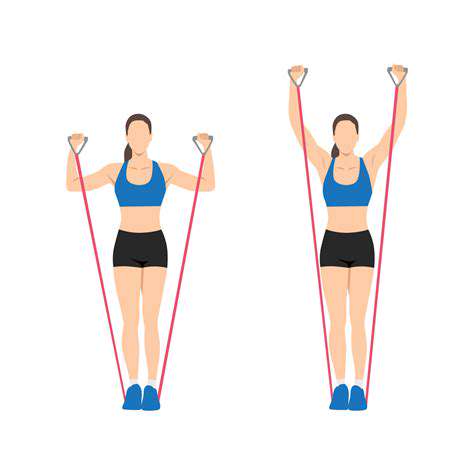Comprehensive Guide to Walking for Seniors
Staying Motivated and Enjoying Your Walks
Finding the Spark: Why Walking Matters
Walking, often perceived as a simple activity, holds profound benefits for seniors. Beyond the physical advantages, it fosters a sense of well-being and boosts mental clarity. Regular walks can significantly improve mood and reduce feelings of anxiety and depression. The rhythmic movement, fresh air, and opportunity for social interaction all contribute to a more positive outlook and a stronger sense of purpose. It's a chance to connect with nature, appreciate the world around you, and rediscover the joy in everyday movement.
Maintaining a consistent walking routine can also be a powerful tool for managing chronic conditions. Improved cardiovascular health, reduced blood pressure, and stronger muscles are just some of the tangible benefits. The feeling of accomplishment after completing a walk, no matter the distance, can be incredibly motivating and contribute to a greater sense of self-efficacy. This sense of empowerment is crucial for maintaining a positive outlook and overall well-being throughout the aging process.
Crafting a Personalized Routine: Tailoring Your Walk
A successful walking routine is one that fits your individual needs and preferences. Consider your physical limitations, available time, and desired level of exertion. Starting slowly and gradually increasing the duration and intensity of your walks is key to avoiding injury and ensuring long-term adherence. Consult with your doctor to determine appropriate exercise levels and any potential limitations. Consider incorporating varied terrains, such as flat paths, gentle inclines, or even a stroll through a park with varied surfaces, to keep your walks interesting and engaging.
Finding a walking buddy can also enhance motivation and make the experience more enjoyable. Sharing your journey with a friend or family member can provide support and accountability. Explore local walking groups or social platforms dedicated to senior fitness to connect with others who share your interests. The camaraderie and shared experiences can make walking a more rewarding and social activity. Remember to always prioritize your safety by walking in well-lit areas and informing someone of your route and expected return time.
Overcoming Challenges and Staying Consistent
Maintaining a consistent walking routine requires planning and a proactive approach to overcoming potential obstacles. Addressing physical limitations through appropriate modifications, such as using walking aids or adjusting the terrain, can significantly enhance comfort and enjoyment. Be prepared for unexpected weather conditions by having appropriate attire and choosing indoor alternatives when necessary. Be flexible and adaptable, allowing for occasional missed walks due to unforeseen circumstances without feeling discouraged. It's important to focus on the overall progress and not get bogged down by minor setbacks.
Remember to celebrate your achievements, no matter how small. Track your progress through a journal, an app, or simply noting the duration and distance of your walks. The sense of accomplishment will reinforce positive habits and motivate you to continue. Rewarding yourself for reaching milestones will also help maintain enthusiasm and make walking a more enjoyable and fulfilling part of your routine. Listen to your body, and don't hesitate to adjust your routine as needed.










